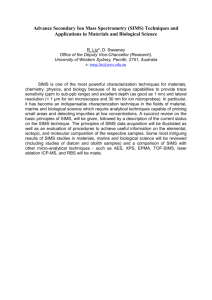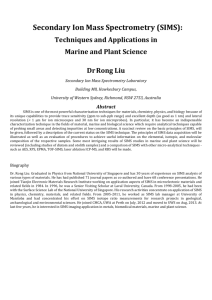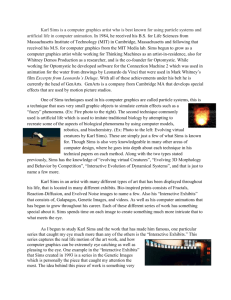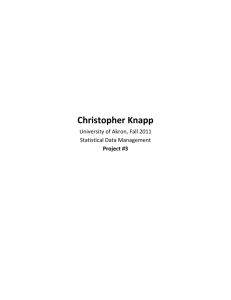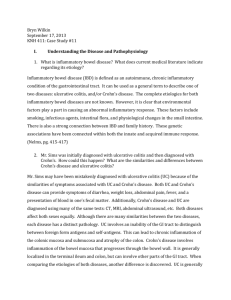SIMS-EDX system for a standard-free analysis Yu. Kudriavtsev
advertisement
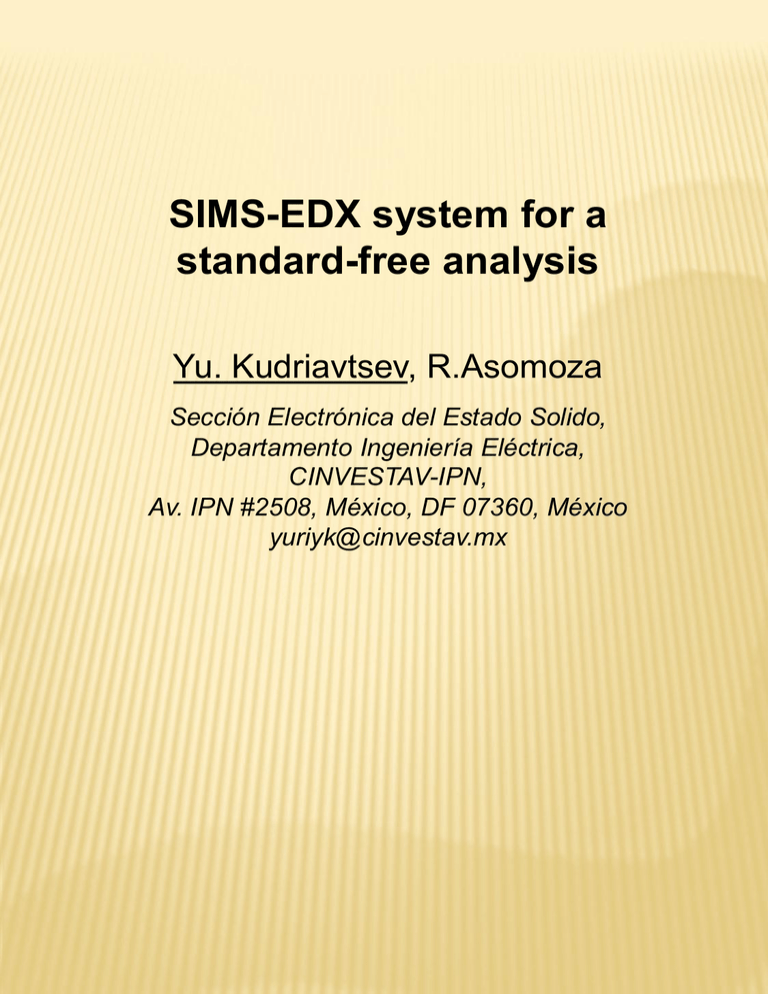
SIMS-EDX system for a standard-free analysis Yu. Kudriavtsev, R.Asomoza Sección Electrónica del Estado Solido, Departamento Ingeniería Eléctrica, CINVESTAV-IPN, Av. IPN #2508, México, DF 07360, México yuriyk@cinvestav.mx Introduction SIMS as any other technique has advantage as well as weak points. The most important disadvantage is poor quantification of SIMS data: by using implanted standards quantification can be done with an experimental error of around ±20%. SIMS analysis of main elements (the concentration range of 1%-100%) cannot be quantified by SIMS using implanted standards; a special calibration procedure should be performed, because of non-linear dependence between concentration of the element of interest and experimental secondary ion current, monitored for it. Energy dispersive X-ray spectroscopy ideally complements SIMS, because of standard free quantitative analysis of most of the elements with the concentration from 0.01 atomic % to 100 atomic %. General idea: Utilize an Electron Gun of any SIMS instrument, used typically for charge compensation, to excite characteristic X-Ray emission from analyzed sample to realize Energy Dispersive X-ray spectroscopy method with the SIMS instrument. Installation of EDD at ims-6f instrument Si crystal of EDD Primary ion trap EDX detector: Exterior view A modified Strip: the closed window protect EDD in the SIMS mode Application of EDX-SIMS instrument: I. Semiconductors 1. Quantitative analysis of solid solutions: bulk, thick films, thin films. See Poster Section: Tue-pos-43 2. Calibration of SIMS (RSFs) for main element analysis in complex materials. 3. Shallow junction analysis (LEXES “inside“). II. Metals and alloys: Quantitative analysis of bulk, thick films and thin films. III. Glass (including natural), ceramics, minerals, etc. Quantitative analysis of bulk, thick films and thin films. X-ray spectrum of obsidian Two different strategies: I. Perform a quantification of main elements by EDX , then analyze dopants and contamination by SIMS MBE grown 1 micron epi-layer of Al0.2Ga0.8N: EDX spectrum and SIMS depth profile 6042105 1E23 133Cs14N 133Cs16O 133Cs24Mg 133Cs27Al 133Cs69Ga 133Cs21H 1E22 Atoms/cm 3 1E21 1E20 1E19 1E18 0 200 400 Time, sec 600 800 II. “Internal calibration” of SIMS 1E23 1E22 EDX Concentration, atoms/cm 3 1E21 1E20 1E19 1E18 1E17 1E16 1E15 1E14 SIMS Elemento Ti* Al* V Mo Zr Fe Si Concentración , % atómicos 83.2 9.2 4.5 3.0 0.1 0.1 0.1 EDX spectrum and found composition of Ti allow 1E25 RSF, atoms/cm 3 1E24 Mo 1E23 Fe Zr V Si Ti Al 1E22 1E21 5 6 7 8 9 10 Ip,eV Fig. RSFs as a function of Ionization potential of element. Points show experimental RSFs, found by SIMS with using of EDX data. Fragments of mass- spectrum, acquired by SIMS for Ti allow 7 10 Al 6 10 O Intensity,cps 5 10 Si Na 4 10 C 3 10 ++ O 2 10 Ti O2 ++ N B 1 10 0 10 4 6 8 10 12 14 16 18 20 22 24 26 28 30 32 34 36 Z/q Ti 7 10 V 6 10 TiO Intensity, cps 5 Fe Mn K Ca 10 4 TiO2 Cr 10 3 10 Ni Se 2 10 1 10 0 10 30 40 50 60 Z/q 70 80 90 7 10 6 10 Ti2 Intensity, cps 5 10 Mo Zr Ti2O 4 10 MoO In 3 TiMo 10 Cs 2 10 1 10 0 10 80 90 100 110 120 130 140 150 160 Z/q 7 10 6 10 Intensity, cps 5 10 4 10 3 10 2 10 1 10 0 10 170 180 190 200 Z/q 210 220 Table 1 Composition of Ti allow, defined by EDX/SIMS in comparison with Certificate of the provider. Elemento Certificate EDX SIMS Falla, % H 0.072% n/d 0.091% <26% B n/d n/d 3E-4% n/d C 0.044% n/d 0.050% <15% N 0.028% n/d 0.062% x2 Na n/d n/d 4E-4% n/d Al 2.72% 9.2%* 2.72%* n/d Si 0.12% 0.1% 0.1% <15% K n/d n/d 3E-6% n/d Ca n/d n/d 6E-5% n/d Ti 87.4% 83.2%* 87.4% n/d V 4.2% 4.5 4.5% <7% Cr Suma: 0.03% n/d 0.027% n/d n/d 0.011% n/d Mn Fe 0.095 0.1 0.1% <5% Ni Suma: 0.03% n/d 0.002% n/d n/d n/d n/d Cu Zr 0.058 n/d 0.06% <4% Mo 2.7% 3.0% 3.0% <10% In n/d n/d 1.4E-4% n/d * Rose rows corresponds to elements used for SIMS calibration. Conclusions: 1. EDX technique ideally complements SIMS for a quantitative analysis of complex materials. 2. Any SIMS instrument, equipped by an Electron Gun, can be “modified” to perform EDX analysis. 3. Energy of primary electron beam can be varied from 0 to 10keV, this means we can vary thickness of the analyzed layer from several microns down to a hundred nanometers. 4. Standard-free analysis in the “full” range of concentration: from 100 atomic % down to 10-7 atomic %, can be realized with a reasonable accuracy. THANK YOU FOR YOUR ATTENTION!
